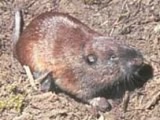 |
|
|
|
|
|
|
Exclosure experiments and comparisons between habitats that experience different levels of herbivore pressure provide clear evidence, that herbivores affect community structure and function in numerous alpine habitats. For instance, the change in dominance of different plant functional groups with
distance from talus slopes inhabited by pikas clearly shows the locally
restricted influence of this herbivore. However, the response of vegetation to changes in the level of herbivory is not always rapid or complete. Low densities of plant species favoured by herbivores may sometimes be due to herbivore pressure in the past. The structure of plant communities is affected not only by selective removal of particular plant species but also by changes in nutrient availability and competitive interactions. In addition, different functional groups exhibit different susceptibility to tissue removal and trampling effects, and the mechanical impact of herbivores can create gaps in the vegetation, which may then be colonized by pioneer species. On the other hand such gaps can give rise to increased soil erosion and deterioration. |
|
Herbivory can either reduce or increase species diversity depending on the grazing intensity and frequency, and on habitat characteristics like productivity and climate. It seems that species richness decreases with grazing when the productivity of the habitat is very low. When productivity is somewhat higher, moderate levels of herbivory may maintain higher species diversity by increasing environmental heterogeneity. Large mobile herbivores may also increase the seed pool by transporting seeds in their faeces. |
|
A very striking example of the influence that a herbivorous animal can have on alpine vegetation concerns the pocket gopher (Thomomys talpoides). Some turf meadows in the Rocky Mountains are so heavily influenced by pocket gophers that they are called "gopher gardens". Pocket gophers live beneath the vegetation while feeding and nesting. They are active throughout the year and bring large quantities of soil to the surface, which may subsequently be eroded by wind or run-off. Erect, bright flowering plants establish on the gopher mounds, hence the name "gopher garden". When these plants die, the bare ground is invaded by cushion plants which may act as nurse plants for erect plants; this starts the formation of alpine turf as long as it is not interrupted by further disturbance. The turf becomes a mosaic of different successional stages and vegetation patches, including pioneer species and cushion plants typical of fellfield within the "normal" turf community. |
1 - Thomomys talpoides |
29 August 2011 |
||
| |
||
